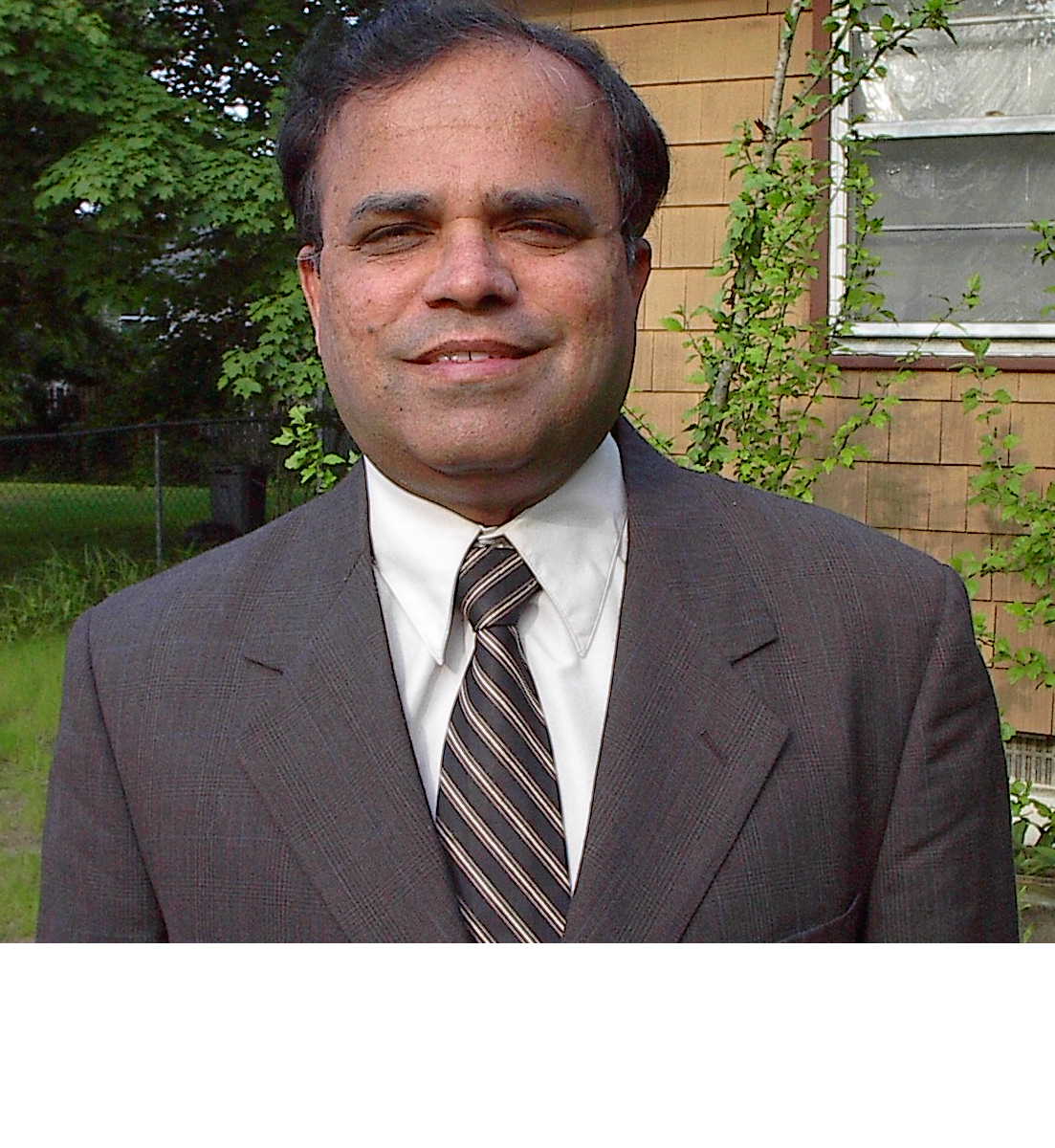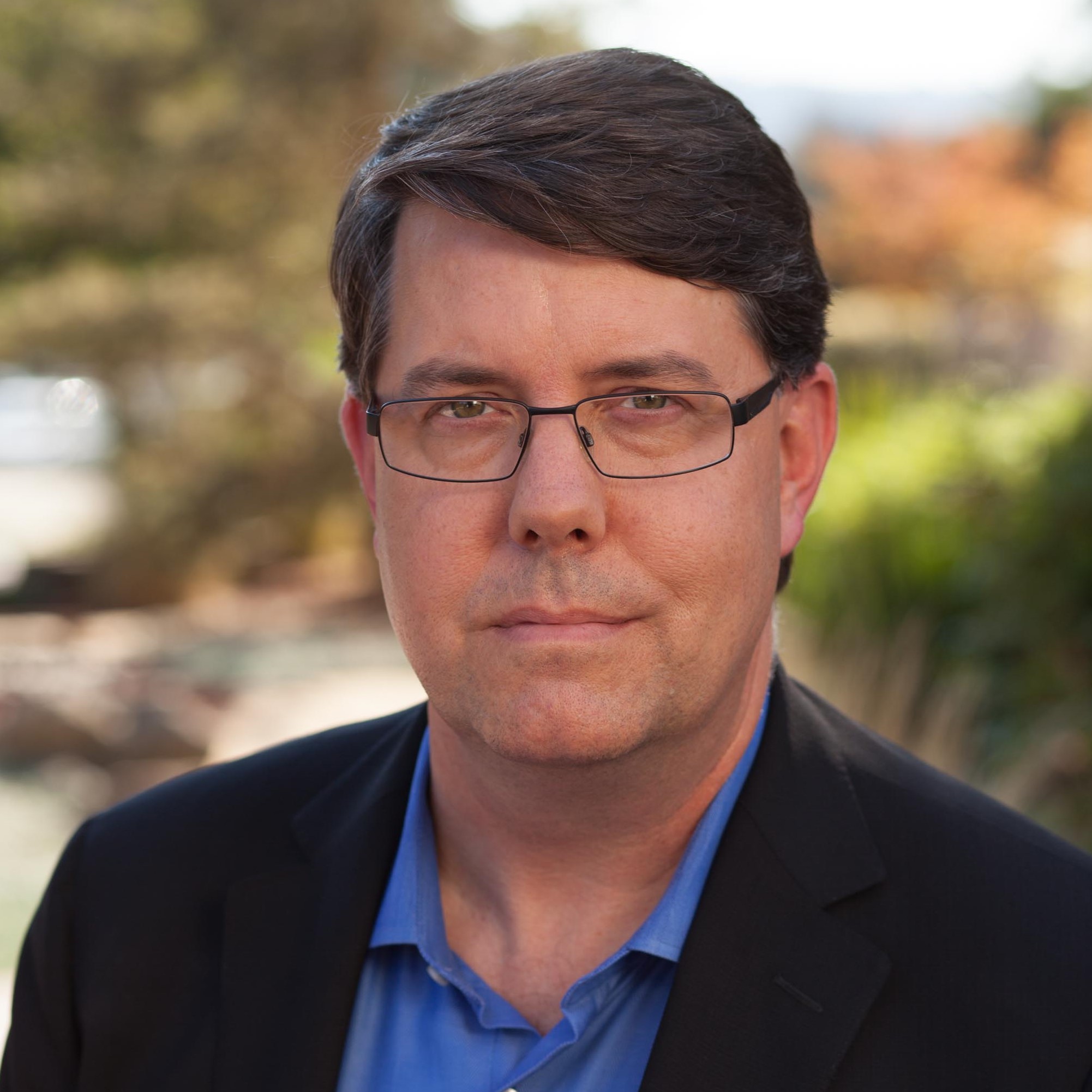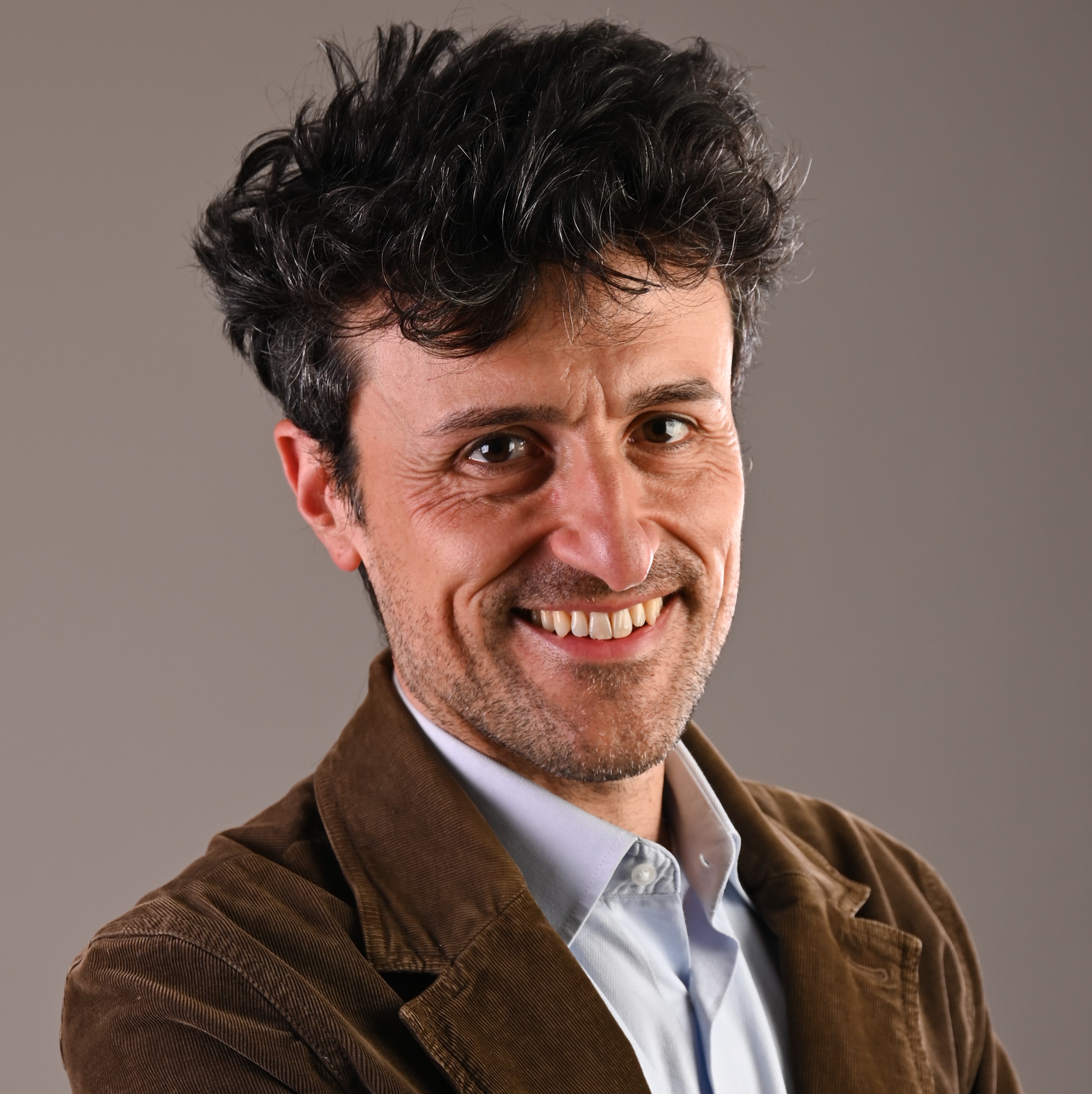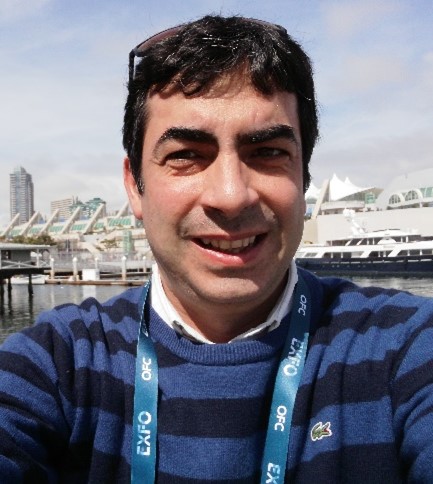IEEE Future Networks Tutorial - 5G/6G 2023 Now & in the Future Edition
 IEEE Future Networks Learning Series - 5G/6G 2023 Now & in the Future Edition
IEEE Future Networks Learning Series - 5G/6G 2023 Now & in the Future Edition
21-22 September 2023 09:00 AM - 12:30 AM EDT
Virtual
Contact This email address is being protected from spambots. You need JavaScript enabled to view it.
IEEE Future Networks Technical are hosting a virtual 5G/6G Tutorial covering the state of networks today and into the future. It is part of the IEEE Future Networks Tutorial Series, a global IEEE sponsored movement in the form of one or multi-day tutorials designed to demystify 5G and beyond technologies and train technology and industry teams on upcoming future networks.
IEEE Future Networks Tutorial - 5G/6G 2023 Now & in the Future Edition will feature a number of tutorial style presentations by Wireless Networks experts from both academia and industry discussing on the way forward beyond 5G that have been selected out of many speakers since 2018 who have presented tutorials in the past. It is an excellent opportunity for researchers, practitioners, and students from both academia and industry to learn about the latest advances on some of the hottest topics in 5G; such as URLLC, Massive MIMO, Industry 4.0, V2X communication, and Machine Learning.
|
Agenda - 21 September 2023 (below times are EDT / New York) |
|
| 9:00 – 9:10 |
Welcome
Dr. Amruthur Narasimhan Ph.D., CISSP, IEEE Future Networks Education WG Tutorial Co-Chair
|
|
9:10 – 10:25 |
Introduction to 5G Applications - Now and Future David Witkowski, Oku Solutions LLC, CA, USA 60 minute video followed by 15 minute live Q&A |
|
10:25 – 11:40 |
Andrea Di Giglio, 5G-SOLUTIONS /TIM, Italy 60 minute video followed by 15 minute live Q&A |
| 11:40 – 11:50 |
Closing
Dr. Amruthur Narasimhan Ph.D., CISSP, IEEE Future Networks Education WG Tutorial Co-Chair
|
|
Agenda - 22 September 2023 (below times are EDT / New York) |
|
| 9:00 – 9:10 |
Welcome
Dr. Amruthur Narasimhan Ph.D., CISSP, IEEE Future Networks Education WG Tutorial Co-Chair
|
|
9:10 – 10:25 |
Jacopo Iannacci,Italy 60 minute video followed by 15 minute live Q&A |
|
10:25 – 12:10 |
Physical and Virtual world – Bridging the gap in 6G Krishnamurthy Raghunandan, MTA, NY, USA 90 minute video followed by 15 minute live Q&A |
| 12:10 – 12:20 |
Closing
Dr. Amruthur Narasimhan Ph.D., CISSP, IEEE Future Networks Education WG Tutorial Co-Chair
|
Organizers
 |
Dr. Amruthur Narasimhan Ph.D., CISSP (This email address is being protected from spambots. You need JavaScript enabled to view it.), IEEE Future Networks Education WG Tutorial Co-Chair Dr. Amruthur Narasimhan Ph.D., CISSP is a consultant in Information Security, Cyber Security and privacy areas. He has over 25 years of experience in System Engineering, Architecture, Technical Leadership and Management, Software Development, Communication Protocols, and Project Management. Narasimhan has professionally trained students in System Engineering, Network Architecture, Security Protocols, Communication Protocols, VOIP security and WLAN security. He has held various positions in multinational companies: Software Engineer Manager Chief at SAIC, Security Consultant at Northrop Grumman, President of Amrutek Services, Technical Manager at Avaya, Principal Technical Staff Member at AT&T, and Associate Professor in Department of Computer Science at Stevens Institute of Technology. Narasimhan was chair of the IEEE conference on Mobile Security/Cyber Security and Privacy held in 2014 and 2015. Narasimhan has received IEEE third Millennium Medal for contributions in Electronic Commerce and Multimedia Technology in May 2000. He has received IEEE Region 1 award for technical achievement in 2002 for eBusiness and Internet Technologies. He has IEEE Region 1 award for technical achievements for Innovation in Artificial Intelligence Technology in 1997. He has been coordinator and speaker for various IEEE conferences on VoIP security, WLAN security and Multimedia security. Narasimhan was chair of IEEE NJ coast section consultant’s network, chair of IEEE NJ Coast Section PACE, Chair of IEEE NJ Coast Section (1996-2002) and Chair of IEEE NJ Computer Chapter (1993-1996). Narasimhan has good communication skills being a coach for Dale Carnegie courses on Human relations. He has graduated as Competent Toast Master in Public Speaking from Toast Masters International. Narasimhan is a Certified Information Systems Security Professional (CISSP). Narasimhan possesses Ph.D. in Computer Science from Indian Institute of Science, Bangalore, India, one of the prestigious institutions in India. |
DETAILS ON PRESENTATIONS & SPEAKERS
Title: Introduction to 5G Applications - Now and Future
Abstract: 5G, the fifth generation of mobile connectivity, entered the scene in 2019 with much fanfare. Intended to be more than just a speed increase for smartphones, it promised a raft of features to serve the Internet of Things and machine-to-machine use cases. This presentation will overview the non-smartphone use cases of 5G, and discuss both the current and future states of these offerings.
Duration: 60 minutes | Category: 5G/6G applications
 |
Speaker Bio: David Witkowski is an author, advisor, and strategist who works at the intersection between local government and the telecommunications industry. David is the Founder & CEO of Oku Solutions LLC, the Executive Director of the Wireless Communications Initiative at Joint Venture Silicon Valley, a Fellow in the Radio Club of America, and an IEEE Senior Member. After serving in the U.S. Coast Guard and earning his B.Sc. in Electrical Engineering from the University of California, he held leadership roles for companies ranging from Fortune 500 multi-nationals to early-stage startups. He serves as Co-Chair of the Deployment Working Group at IEEE Future Networks, as Senior Advisor for Broadband Deployment for the Monterey Bay Economic Partnership, as a member of the Connected Communities Forum in the Wireless Broadband Alliance, and as an Expert Advisor to the California Emerging Technology Fund. Mr. Witkowski is the author of "Bridging the Gap : 21st Century Wireless Telecommunications" (Joint Venture Silicon Valley - 1st Ed.: 2016, 2nd Ed.: 2019) and "Economic Impacts to Residential Real Estate from Small Wireless Facilities" (Joint Venture Silicon Valley - 2021), co-editor of "Public Wi-Fi Blueprint" (GCTC @ NIST – 2017) and "The Municipal Internet of Things Blueprint" (GCTC @ NIST - 2019), co-author of "5G vs. Wi-Fi: Challenges for Economic, Spectrum, and Security Policy" (Journal of Information Policy - 2021), co-author of "Carrier & Public Wi-Fi" (Mobile Experts LLC - 2015), co-author of "Deployment - International Network Generations Roadmap" (IEEE - 2021), and co-author of "HayWired Scenario, Chapter S, Vol. 3 - Telecommunications and ICT" (U.S. Geological Survey - 2021). |
Abstract :Looking to 2030, the future data- and communication-centric paradigms of 6G, Super-IoT (Internet of Things), and Tactile Internet (TI) will require leaps forth at technology and, notably, at a conceptual level. Artificial Intelligence (AI) will be a cornerstone both on the service and network operation plane, leveraging self-sustenance and self-evolution of the infrastructure. Within such a context, the currently-in-use design methods for hardware-software (HW-SW) systems are regarded as increasingly less suitable to meet the challenge fully.
This tutorial focuses on low-complexity HW components, like sensors, actuators, and transducers, gathering attention around Micro/Nano (MEMS/NEMS) technologies. In particular, reinforcement of the HW versus SW separation and symmetry is proposed, overcoming the so-called HW-SW divide. Partial reformulation of the HW concept is proposed, leveraging the parallelism of HW/SW with classical elements in nature.
The resulting frame of reference is named WEAF Mnecosystem (Water, Earth, Air, and Fire Micro/Nanotechnologies Ecosystem). It embodies solutions based on Micro/Nanotechnologies, regarded as pivotal in the transition to 6G/TI. Then, the WEAF Mnecosystem landscape is populated by reporting state-of-the-art research activities based on Micro/Nanotechnologies, identified as key enablers of the future paradigms at stake.
Duration: 60 minutes | Category: 5G/6G applications
 |
Speaker Bio: Jacopo Iannacci (Senior Member of the IEEE) was born in Bologna, Italy, in 1977. He received the MSc (Laurea) degree in electronics engineering from the University of Bologna, Italy, in 2003, and the PhD in information and telecommunications technology from the Advanced Research Center on Electronic Systems “Ercole De Castro” (ARCES) at the University of Bologna, Italy, in 2007. He received the Habilitation as Associate Professor in Electronics from the Italian Ministry of Education, University and Research (MIUR), in 2017, and the Habilitation as Full Professor in Electronics from the Italian Ministry of University and Research (MUR), in 2021. He worked in 2005 and 2006 as visiting researcher at the DIMES Technology Center (currently Else Kooi Lab) of the Technical University of Delft, the Netherlands, focusing on the development of innovative packaging and integration technology solutions for RF-MEMS (Radio Frequency passives in MEMS technology) devices. In 2016, he visited as seconded researcher the Fraunhofer Institute for Reliability and Microintegration IZM in Berlin, Germany, to conduct high-frequency characterization of RF-MEMS components jointly with the RF & Smart Sensor Systems Department at IZM. Since 2007, he is researcher (permanent staff) at the Center for Sensors & Devices of Fondazione Bruno Kessler, in Trento, Italy. His research interests and experience fall in the areas of Finite Element Method (FEM) multi-physics modelling, compact (analytical) modeling, design, optimization, integration, packaging, experimental characterization and testing for reliability of MEMS and RF-MEMS devices and networks for sensors and actuators, Energy Harvesting (EH-MEMS) and telecommunication systems, with applications in the fields of 5G, Internet of Things (IoT), as well as future 6G, Tactile Internet (TI) and Super-IoT. Dr. Iannacci authored more than 130 scientific contributions, including international journal papers, conference proceedings, books, book chapters and one patent. Since 2015, he is member of the editorial board of the Springer Microsystem Technologies. He is currently associate editor of the Springer Microsystem Technologies and of Frontier in Mechanical Engineering. He was and is currently involved in several international conferences as symposium chair/co-chair, session chair, technical program committee member, international advisory board member, tutorial lecturer and invited speaker, among which the following few are mentioned: IEEE Sensors; IEEE 5GWF/FNWF; SPIE Microtechnologies; ESSCIRC-ESSDERC; ESREF; MNDCS. |
Title: Physical and Virtual world – Bridging the gap in 6G
Abstract: This tutorial provides a quick overview of the effort from 6G cellular standards to support Immersive communication for 3D with high resolution video. This technology is expected to make a major impact on society by the end of this decade. To support it using 3GPP specifications, technologies currently being deployed in 5G such as eMBB (enhanced mobile broadband), URLLC (Ultra reliable low latency communication) and AI (Artificial Intelligence) which are being enhanced. This tutorial will presents typical applications that need such wireless technologies, to help the society and enhance our lives. Concepts of VR (Virtual reality), Metaverse and network performance needed to support high resolution 3D video or XR (Extended reality of VR headsets or smartphones) to display the virtual world, will be described.
In addition to entertainment applications like interactive games, others such as telesurgery, immersive learning, holographic conference will need this technology of 6G to bring about important changes. Realizing its importance, the 3GPP standard as well as ITU (Int’l Telecom Union) are working on detailed specifications to meet that goal. The major impact of 6G will be felt in driverless electric vehicles, smart manufacturing and agriculture and smart grids which will be discussed in this tutorial
Duration: 90 minutes | Category: 5G/6G core
 |
Speaker Bio: Krishnamurthy Raghunandan is a senior manager at MTA, New York City Transit, since 2005. He has been responsible for deployment of 5G services in all the subway stations and WiFi (both 2.4 GHz unlicensed and 4.9GHz licensed) at yards and stations. He was also instrumental in deploying millimetric wave links in rail yards to bring camera traffic to security booths. Prior to joining MTA, Raghu worked in Bell labs and was the RF Network lead at 3GPP standards. He was also responsible for field test of cell phones and Sirius satellite radio used in premium cars today. Raghu has bachelor’s, master’s and research degrees in Electrical engineering, with long standing career in wireless communication. He is the author of the textbook “Introduction to Wireless communication and networks – a practical perspective” which was published by Springer Nature in April 2022. This book was approved by the IEEE communication society as a textbook for undergraduate students in telecommunication. |
Title: 5G and beyond for eHealth
Abstract: The tutorial provides baseline information for use cases related to the eHealth and Emergency domains that would be enabled by the beyond-5G mobile network (B5G) technology. It contains key information for each use case regarding their definitions, implementation, technical requirements, and trials. The idea is to adopt these use cases to demonstrate the large-scale trialling of the B5G technology specifically devoted to eHealth and Emergency domains, by supporting the B5G applications in large-scale environments (e.g. hospitals) and bringing novel applications (e.g. Remote Proctoring and Smart Ambulance), introducing societal benefits through the development of innovative B5G/6G applications.
Main use cases considered are:
Use Case 6 “Mass Casualty Incident (MCI) and Emergency Rescue in Populated Area”, aiming to offer cutting-edge B5G technological solutions for the most effective coordination for first-case responders in the context of i) triage and coordination of resources at the scene of mass casualty incidents, which could be building collapses, earthquakes, fires, or other large-scale emergencies, and ii) an emergency evacuation in the context of a crowded sporting or cultural event.
Use Case 7 “Remote Proctoring”, aiming to support remote proctoring activities in the field of interventional cardiology, offering innovative solutions based on smart tools for telepresence in the surgical field to connect expert proctors and remote hospitals.
Use Case 8 “Smart Ambulance”, adopting a 5G-connected smart ambulance operating outdoor in mobility. the ambulance is equipped with i) new audio/video communication tools (Augmented Reality – AR - and virtual reality - VR - headsets) between operators on the ambulance and supporting experts in the hospital, ii) diagnostic tools for cardiological pathology and ii) devices to guarantee an efficient and fast 5G connection in remote locations and mobility conditions, including emergency high-speed travel through congested urban areas.
Use Case 9 “Adaptive Control of Hannes Prosthetic Device” (Pisa), focusing on designing advanced control capabilities for prostheses using Artificial Intelligence (AI) methods and deployment on the Hannes arm.
Tutorial Length: 60 minutes | Category: 5G/6G applications
Intended audience: verticals research, business employees, politicians, 5G technical experts
 |
Seaker Bio: Andrea Di Giglio (Dr.Eng) received a Dr. Eng. degree in Electronic Engineering from the University of Pisa (Italy) and the Engineering License degree from Scuola S. Anna. He joined Telecom Italia Lab (formerly CSELT), that is the Telecom Italia Group's Company for study, research, experimentation, and qualification in the field of Telecommunications and Information Technology. The fields of his research are addressed toward Internet Security, Storage Area Networks and Optical Networks Architecture. He was involved in the architectural TIM - Uso Interno - Tutti i diritti riservati. Work Package of the IST Project Nobel (Phase 1 and 2) “Next generation Optical networks for Broadband European Leadership” as Work Package leader and ICT STRONGEST as project coordinator. Dr. Di Giglio is the author of dozens of publications, including books, conference papers and workshops and it is currently the project coordinator of 5G-SOLUTIONS, flagship project for European Commission research for the Verticals’ usage of 5G Connectivity. |

